Module 6 Intro
| Site: | MoodleHUB.ca 🍁 |
| Course: | Biology 20 SS |
| Book: | Module 6 Intro |
| Printed by: | Guest user |
| Date: | Wednesday, 24 December 2025, 4:51 AM |
Description
Created by IMSreader
1. Module 6 Intro
Module 6—The Motor System and Homeostasis
Module Introduction
In this module you will explore how muscles work to move you, heat your body, and support other body systems. You will look at the benefits of maintaining healthy muscle structure and function throughout your life. You will also explore the effects of muscle disorders.
You will be exploring the following essential questions in this module:
- How are the roles of cardiac, smooth, and striated muscle different?
- How do specialized structures in muscles cause muscle contraction?
- What is the relationship between energy use by muscle cells and heat production?
- What are the main complications of the muscular system, and what technologies can be used to treat these conditions?
- How does the motor system support and interact with other body functions, including digestive, circulatory, respiratory, and excretory systems?
At the end of this module you will be required to complete a Module 6 Project. This project can be found in the Module Assessment section of the Module Summary along with a marking guide. In your module project you will be expected to research mitochondrial myopathy. In a unified response you will explain how aerobic respiration and muscle contractions are affected by this disorder and predict the impact that the disease would have on daily life. You will identify assistive technologies.
1.1. Big Picture
Module 6—The Motor System and Homeostasis
 Big Picture
Big Picture
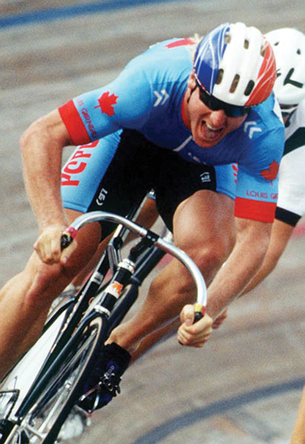
Courtesy Archives Canada
As you saw in Unit C, the energy supply for the activities that power people’s bodies includes aerobic and anaerobic cellular respiration. In this module you will look at the link between these processes and muscle contraction.
In one of the greatest moments in Canadian sport history, Simon Whitfield won the gold medal in the triathlon at the 2000 Summer Olympics in Sydney, Australia. The triathlon is a grueling combination of swimming, cycling, and running and is the ultimate test of speed, strength, and endurance.
Whitfield went into the race as Canada’s lone hope in the men’s triathlon. Leading up to the games, he had finished no higher than seventh in previous world championships. He defied all odds, even overcoming a crash in the cycling portion of the event and pulled away from the field in a final 500-metre sprint to the finish.
As Whitfield propelled himself around the triathlon course he used a variety of muscles and converted the stored chemical energy in their cells into kinetic energy. During this conversion, a tremendous amount of energy was also converted to heat. How did Whitfield’s motor system propel him toward victory?
As you will see in all of the body systems in Unit D, when faced with stresses a variety of difficulties and disorders arise. In this module you will also investigate specific muscle disorders, as well as the effects of the underuse and overuse of muscles.
You will see the importance of training and exercise on muscle health. You will also consider the interaction of the muscular system and other body systems. What is the role of the muscle system?
To support the exploration of the role of the motor system, you will explore the following essential questions:
- How does the motor system support and interact with other body functions, including digestive, circulatory, respiratory, and excretory systems?
- How are the roles of cardiac, smooth, and striated muscles different?
- How do specialized structures in muscles cause muscle contraction?
- What is the relationship between energy use by muscle cells and heat production?
- What are the main complications of the muscular system, and what technologies can be used to treat these conditions?
Throughout this module, you will interpret information that can be used for your module project. Do not begin creating your project at this time. Your project, which investigates mitochondrial myopathy, will be submitted at the end of the module as the final module assessment. You will be submitting a unified response, much like you would complete on a diploma exam. For detailed instructions and the evaluation criteria, visit the module assessment section.
As you work through the module, make note of questions or concepts that were particularly challenging or thought provoking. This list will be helpful when you are ready to start the unit assessment. You will be researching a disorder that disrupts a body system. You may want to do more research on something you investigated in your module projects or research a topic that you find interesting. You will find the details for this assessment and an evaluation rubric in the Unit Assessment portion of the Unit Summary.
1.2. In this Module
Module 6—The Motor System and Homeostasis
In This Module
Lesson 1—Movement and Muscle Tissue
If you are to understand exactly how you move around, you need to study how muscles convert the chemical energy of ATP into kinetic energy—the energy of movement. The intricate and precise movements of a dancer, a basketball player, or an artist occur through the coordinated actions of contracting and relaxing muscles. However, not all motion results in people moving their bodies around their physical environment. Different kinds of muscles are used in different body systems.
- How are the roles of cardiac, smooth, and striated muscles different?
- How do specialized structures in muscles cause muscle contraction?
- What is the relationship between energy use by muscle cells and heat production?
Lesson 2—Muscles, Health, and Homeostasis
From what you know of biological systems, no single system will exist on its own. And the absence or impairment of a system will affect all other systems. The motor system is no different. The motor system helps your body to maintain homeostasis. When a condition impairs the motor system, other systems are affected. As a result, many technologies have been developed to treat or prevent impairments to the motor system.
- What are the main complications of the muscular system, and what technologies can be used to treat these conditions?
- How does the motor system support and interact with other body functions, including digestive, circulatory, respiratory, and excretory systems?
 Module Assessment
Module Assessment
You will be graded for your work in the Lesson 1 Assignment and Lesson 2 Assignment.
In addition, you will be required to complete the Module 6 Project and research facts about mitochondrial myopathy. This project will be worth 15 marks. When you have finished Lesson 1 and Lesson 2, go to the Module Assessment section of the Module 6 Summary to complete the project.
1.3. Lesson 1 Intro
Module 6—The Motor System and Homeostasis
Lesson 1—Movement and Muscle Tissue
 Get Focused
Get Focused
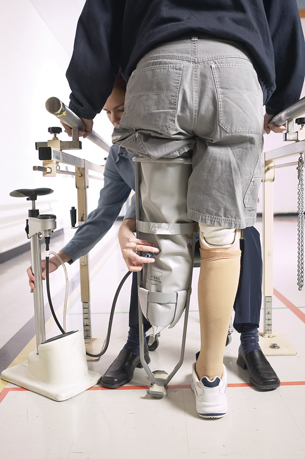
© 2007 Jupiterimages Corporation
Most people take their daily movements for granted. The ability to walk down the street, jump up and down, throw a ball, or even get out of bed in the morning are all abilities that rely on a motor system or a muscular system to occur. The study of movement is all part of the science of kinesiology. This particular field looks at all aspects of human movement including health, wellness, and performance.
The University of Calgary has a world-renowned Faculty of Kinesiology with divisions that allow students to research topics ranging from athletic therapy, biomechanics, nutrition, exercise, sport, and health physiology related to psychology.
Although you will be focusing on the functional aspects of muscle movement in this lesson, there is more to the topic of movement than simply the contraction and relaxation of muscles. As you will see in following modules, no system works in isolation. An Olympic athlete relies on his or her motor system in order win a medal. However, overall excellence also depends on the support that the circulatory, respiratory, digestive, and excretory systems provided to those muscles.
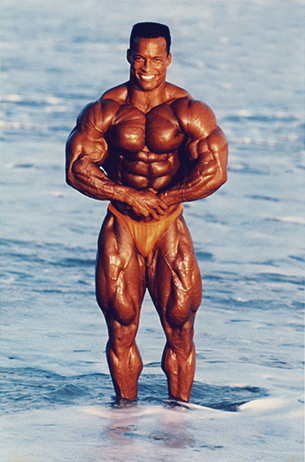
You also rely on your motor system to carry you through your daily activities and, like an Olympic athlete, are reliant on their interaction with your other body systems. In many ways, your motor system forms the structural framework through which the other body systems maintain your homeostasis. You may not be a world-class athlete, but the well-being of your motor system is vital to your survival and your overall health, wellness, and performance in the less strenuous tasks of everyday life.
In this lesson you will learn about the structure and general function of the muscular system. You will specifically look at the types of muscle tissue, how muscles contract, and the sources of energy for muscle contraction.
In this lesson you will explore the following essential questions:
- How are the roles of cardiac, smooth, and striated muscles different?
- How do specialized structures in muscles cause muscle contraction?
- What is the relationship between energy use by muscle cells and heat production?
 Module 6: Lesson 6 Assignment
Module 6: Lesson 6 Assignment
Your teacher-marked Module 6: Lesson 1 Assignment requires you to submit a response to the following:
- TR 1. Types of Muscle Tissue
- TR 3. Energy Supply During an Activity
You can access your Module 6: Lesson 1 Assignment. You can print off the assignment or save the download to your computer. Your answers can be saved on this document to your course folder.
The other questions in this lesson are not marked by the teacher; however, you should still answer these questions. The Self-Check and Try This questions are placed in this lesson to help you review important information and build key concepts that may be applied in future lessons.
After a discussion with your teacher, you must decide what to do with the questions that are not part of your assignment. For example, you may decide to submit to your teacher the responses to Try This questions that are not marked. You may decide to record the answers to all the questions in the lesson and place those answers in your course folder.
1.4. Page 2
Module 6—The Motor System and Homeostasis
 Explore
Explore
non-striated muscle: contains contractile proteins arranged randomly and do not create bands or stripes; called smooth muscle
striated muscle: marked with stripes or bands that are the result of highly organized arrangements of contractile proteins within muscles
constrict: to make smaller or narrower, especially at one place, by squeezing
Blood vessels will constrict to reduce blood flow.
dilate: to make wider or larger; cause to expand or swell; stretch
Blood vessels will dilate to increase blood flow.
There are three types of muscles in your body. Food moves through intestines and blood moves through blood vessels via the contractions of smooth or non-striated muscle. Your heart, a continually working muscle, beats because of specialized cardiac muscle. The muscles you are most familiar with, like your biceps or abdominals, are skeletal or striated muscles.
One of the major differences between smooth (or non-striated muscles) and cardiac or striated (skeletal) muscles is how they contract. Smooth muscles are said to constrict or dilate, while cardiac and striated (skeletal) muscles contract (shorten) or relax (lengthen). Constriction and dilation are still contractions, but of hollow organs such as your intestines.
 Read
Read
Read “Movement and Muscle Tissue” on pages 332 and 333 of the textbook to compare and contrast the different kinds of muscles.
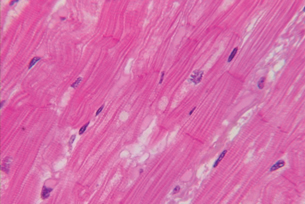
Courtesy of Uniformed Services University of the Health Sciences
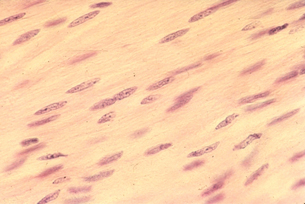
Courtesy of Uniformed Services University of the Health Sciences
 Try This
Try This
TR 1. Types of Muscle Tissue
You can list the three types of muscle: skeletal, smooth, and cardiac. Can you differentiate between structure and location in the body?
In the Lesson 1 Assignment you will be asked to summarize the characteristics of each type of muscle and decide how each kind of muscle helps you to react to an event.
 Self-Check
Self-Check
SC 1. Click here to complete the Self-Check on muscle types.
1.5. Page 3
Module 6—The Motor System and Homeostasis
The Purpose of Muscles
Muscles contract—it’s that simple! Whatever the type and function, all muscle tissues are specialized so that they are capable of shortening and producing a motion. In addition, because of the sizable energy requirement for muscle contraction, a significant amount of heat is released during this process. As a result of these two characteristics—the ability to contract and generate heat as a by-product of their metabolism—muscles serve a number of functions. These functions include
- support and movement
- the propulsion of blood through vessels
- the movement of food or body secretions through tracts
- thermoregulation, or the ability to regulate body temperature
Muscle cells possess other attributes besides contractility.
- All muscles are excitable—they are able to respond to stimuli. This important capability is also common to nervous tissues.
- Muscles are extensible in that they can be stretched and still maintain contractile ability. As you will see, some muscles are better at this than are others.
- Finally, muscle cells are associated with elastic connective tissues. These connective-tissue elements enable muscles to contract or stretch and then return to their original length. This attribute is called elasticity.
1.6. Page 4
Module 6—The Motor System and Homeostasis
Muscle Hierarchy—The Way That Muscles Are Organized
Muscle tissue is organized in a hierarchical manner.

Helene Colbourne et al, Inquiry into Biology (Toronto: McGraw-Hill Ryerson, 2007), p. 335. Reproduced by permission.
muscle fibre: a single muscle cell
actin: a thin myofilament consisting of two strands of actin protein molecules wrapped around each other
Actin works with myosin to produce muscle contractions.
myosin: a thick myofilament consisting of two strands of myosin molecules wound around each other
One end consists of a long rod, while the other end consists of a double-headed globular region. Myosin works with actin to produce muscle contractions.
Have you ever cut up raw meat in preparation for cooking? If you haven’t thought about it before, the meat that you eat is muscle. The translucent covering of a chicken breast that fat is often attached to is connective tissue, or tendon. A chicken breast, if examined closely with a microscope, would display groups of muscle fibre bundles. Since a chicken breast would be considered a skeletal muscle, muscle cells would show striations under the microscope. Essentially, when you eat meat, you are consuming the contractile proteins actin and myosin.
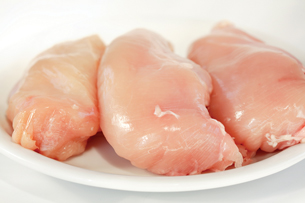
© Ingrid Balabanova/shutterstock
 Read
Read
Read “Skeletal Muscle Consists of Bundles of Fibres” on pages 335 and 336 of the textbook for a further explanation and details on the components of skeletal muscles. Pay particular attention to “Table 10.1.”
 Self-Check
Self-Check
SC 2. Click here to complete the Self-Check about Skeletal Muscle Fibres.
 Read
Read
You may find it useful to first read “The Mechanism of Muscle Fibre Contractions” on pages 336 to 339 of the textbook. This section summarizes with diagrams how myofilaments, actin, and myosin work together to cause muscle contractions. The role of calcium ions in muscle contractions is also analyzed.
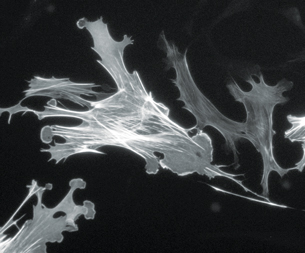
© Andre Nantel/shutterstock
Muscle contraction in its most basic form involves the interaction of the two types of myofilaments—actin and myosin. During this process, known as the sliding filament model of muscle contraction, the sarcomere—the region of overlapping actin and myosin myofilaments—shortens in response to muscle stimulation. The sarcomere repeats itself along the length of skeletal and cardiac muscle fibres.
Each sarcomere is bounded by Z-lines that ultimately move toward each other when the thin actin myofilament moves past the thicker myosin myofilament. The actin myofilament pulls on the ends of the region of contraction.
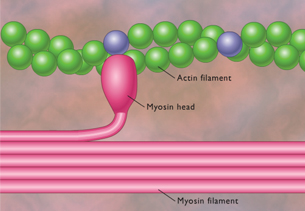
Copyright © The McGraw-Hill Companies, Inc.
 Watch and Listen
Watch and Listen
This process may be hard to visualize, so you now have the opportunity to view some animations in order to sort out what is going on in a muscle contraction. The first animation, Myofilament Contraction, shows the interaction of myosin and actin myofilaments and mentions the role of ATP.
In the second animation, Sarcomere Contraction, the shortening of the sarcomere is illustrated and the change in the various zones and bands that make up the sarcomere are depicted. This organization of bands makes skeletal muscles striated.
Note that you are not required to know all of these different regions. However, in order to understand how actin and myosin interact to contract the muscle, it is helpful to visualize the changes in these regions. In particular, note that as the actin myofilaments are pulled toward the centre of the myosin myofilaments, the sarcomeres, bounded by their Z-lines, shorten. Meanwhile, the H-zone—in between the actin myofilaments—disappears.
This final animation, Breakdown of ATP and Cross-bridge Movement During Muscle Contraction, shows why calcium ions are required for muscle contractions and further explains the role of ATP.
 Self-Check
Self-Check
SC 3. Put the following numbered statements into the correct order regarding the movement of actin and myosin.
- The myosin head flexes, advancing the actin filament.
- The myosin head releases and unflexes, powered by ATP.
- The myosin head is attached to actin.
- The myosin reattaches to actin farther along the fibre.
SC 4. What is the role of Ca+?
 Self-Check Answers
Self-Check Answers
SC 3. The correct order is 3, 1, 2, 4.
SC 4. Calcium ions bind to proteins troponin-tropomyosin on actin. This binding moves the proteins away from myosin receptor sites. Myosin heads are then able to attach to actin and use ATP to shorten the myofibril.
 Try This
Try This
TR 2. Building Bigger Muscles
Perform a web search to find out how building muscle mass relates to actin and myosin.
1.7. Page 5
Module 6—The Motor System and Homeostasis
Energy for Muscle Contraction
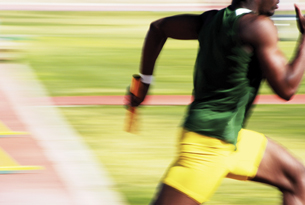
© Jim Parkin/shutterstock
The body’s muscles require a continuous supply of energy in order to maintain their function. When the energy demands for muscle contraction exceed the reservoir of stored energy, the ability to control movements may be impaired to the point that normal voluntary coordination of even simple tasks like running are impossible.
You can find a number of videos on the Internet outlining the effects of extreme depletion of energy reserves in two competing triathletes as they approach the finish line of the 1997 Ironman World Championship. These videos are quite compelling and may be found using the key words “1997 ironman crawl.”
Muscle contraction requires a continuous supply of energy in the form of ATP. There are three main sources of this energy—one of which is new to you:
- creatine phosphate (sometimes referred to as the phosphagen system)
- aerobic respiration
- fermentation (also known as anaerobic respiration and/or as the lactic acid system)

Inquiry into Biology 10.8_p.340, from McGraw Hill. Reproduced by permission.
Review the mechanisms by which the energy is supplied through creatine phosphate, aerobic cellular respiration, and fermentation by looking at the following diagram and reviewing what you learned in Unit C. Reading “Energy for Muscle Contraction” on pages 339 to 342 of the textbook may also be beneficial.
 Self-Check
Self-Check
SC 5. Once you are clear on the differences described in the diagram, complete the following summary table. This table compares the three sources of energy for muscle contraction.
Energy Source |
Aerobic or Anaerobic |
Site of Reaction |
Initial Reactant Required for Contraction |
Final Products of Reaction |
Relative Amounts of ATP Produced |
| Creatine Phosphate | |||||
|---|---|---|---|---|---|
| Aerobic Cellular Respiration | |||||
| Fermentation |
 Self-Check Answer
Self-Check Answer
SC 5. Note the following answer.
Energy Source |
Aerobic or Anaerobic |
Site of Reaction |
Initial Reactant Required for Contraction |
Final Products of Reaction |
Relative Amounts of ATP Produced |
| Creatine Phosphate | anaerobic, doesn’t require oxygen | within the muscle myofilaments | creatine phosphate | creatine + ATP | high, for a short period of time |
|---|---|---|---|---|---|
| Aerobic Cellular Respiration | aerobic, requires oxygen | mitochondria of muscle cells | glucose or fatty acids | CO2 + H2O + ATP | high |
| Fermentation | anaerobic, doesn’t require oxygen | cytoplasm of muscle cells | glucose or fatty acids | lactate (lactic acid) + ATP | low |
During prolonged endurance exercise—such as running a marathon—a depletion of muscle sugar stores, a decrease in blood glucose, dehydration, or an increase in body temperature contribute to fatigue. During intense muscular activity, such as short-distance running, lactic acid is formed through glycolysis and lactic acid fermentation.
The H+ ions from lactic acid decrease the pH of the muscle; this may inhibit metabolic processes, Ca2+ fluxes, and ATP activity, and thereby decrease work output. The reason why you experience pain while having a muscle cramp is because your muscle has stopped functioning properly. This is a mechanism designed to allow your body to recover the oxygen debt that has occurred. If you are in pain, you generally stop using the muscles.
 Try This
Try This
TR 3. Energy Supply During an Activity
How and when are the different sources of muscle metabolism that you already know about—creatine phosphate (the phosphagen system), aerobic respiration, and anaerobic respiration (lactic acid system)—used during exercise? Why is heat produced in the muscles during exercise? You may need to do further research.
Prepare a step-by-step summary of how the body is supplied with energy over the course of exercising. Keep in mind how ATP is supplied to the muscle cells over the first few seconds, minutes, and eventually longer portions of a workout. Also, show the relationship between heat production and muscle use. You may use a variety of formats such as a slide show, a podcast, a poster, a diagram, or a paragraph to present your summary.
You will find directions and marking guidelines in your Lesson 1 Assignment.
 Self-Check
Self-Check
SC 6. Click here to complete a quiz.
1.8. Page 6
Module 6—The Motor System and Homeostasis
 Reflect and Connect
Reflect and Connect
Develop ten of your own review questions about muscles and their solutions. Once you have written your review questions, post them to the discussion board for your fellow Biology 20 students to attempt. Choose five different questions written by someone else from the discussion board, and try to complete them as well. Add your own ten questions and answers, plus the five you attempted from the discussion board, to your course folder as a review.
 Reflect on the Big Picture
Reflect on the Big Picture
Athletes spend a huge amount of time fine-tuning their motor systems. The contraction of muscles and the use of energy are vital elements of interest to athletes. Since skeletal muscle is controlled voluntarily, it has become the muscle group that humans are most focused on. People have discovered all of the components of these muscles and have figured out the complex actions that cause muscles to contract and relax.
The use of energy and heat production during muscle use is highly researched. You are moving from learning about cellular mechanics of the muscle system in this lesson to how muscles maintain homeostasis in Lesson 2. Think of how your motor system functions as part of your entire body system.
 Going Beyond
Going Beyond
Why does “warming up muscles” help prevent you from becoming injured? Perform a web search to see if you can discover the reason for doing stretches and warm-ups before doing physical activity.
1.9. Page 7
Module 6—The Motor System and Homeostasis
 Lesson Summary
Lesson Summary
In this lesson you explored the following essential questions:
-
How are the roles of cardiac, smooth, and striated muscles different?
-
How do specialized structures in muscles cause muscle contraction?
-
What is the relationship between energy use by muscle cells and heat production?
In this lesson you have learned about the general responsibilities of the muscular system as well as the specific structure and function of muscle tissue. The characteristics of the three types of muscle tissue (skeletal, smooth, cardiac) were indicated, as were the mechanics of skeletal muscle contraction. You focused on the sliding filament model of actin and myosin interaction.
With the muscular system playing such a broad role in relation to the other body systems, an efficient method of supplying energy over short- and long-term muscle use was discussed.
You explored the phosphagen, aerobic, and anaerobic systems of ATP generation in relation to heat production. As the high energy phosphate bonds in ATP are broken to release energy for muscle contractions, heat is also released as a by-product.
As you work through the remaining physiology lessons in Unit D, the importance of the muscular system in the function of almost every other body system will be revealed.
Lesson Glossary
actin: a thin myofilament consisting of two strands of actin protein molecules wrapped around each other
Actin works with myosin to produce muscle contractions.
constrict: to make smaller or narrower, especially at one place, by squeezing
Blood vessels will constrict to reduce blood flow.
dilate: to make wider or larger; cause to expand or swell; stretch
Blood vessels will dilate to increase blood flow.
muscle fibre: a single muscle cell
myosin: a thick myofilament consisting of two strands of mysosin molecules wound around each other
One end consists of a long rod, while the other end consists of a double-headed globular region. Myosin works with actin to produce muscle contractions.
non-striated muscle: contains contractile proteins arranged randomly and do not create bands or stripes; called smooth muscle
striated muscle: marked with stripes or bands that are the result of highly organized arrangements of contractile proteins within muscles
1.10. Lesson 2 Intro
Module 6—The Motor System and Homeostasis
Lesson 2—Muscles, Health, and Homeostasis
 Get Focused
Get Focused
Being physically active makes people feel better. Why? Physical activity promotes healthy muscles. Since your motor system supports other body systems in maintaining homeostasis, it is not hard to make the conclusion that healthy muscles equal better overall health. If you are asked to imagine a healthy person, you likely imagine someone who has muscle tone. People, however, can experience complications to the muscular system through injury or disease. These injuries or diseases can have an effect on other body systems. Luckily, technological advancements have been made to help maintain muscle fitness.
In this lesson you will explore the following essential questions:
- What are the main complications of the muscular system, and what technologies can be used to treat these conditions?
- How does the motor system support and interact with other body functions, including digestive, circulatory, respiratory, and excretory systems?
 Module 6: Lesson 2 Assignment
Module 6: Lesson 2 Assignment
Your teacher-marked Module 6: Lesson 2 Assignment requires you to submit a response to the following:
- TR 1. Injuries Related to Athletics
- TR 2. Muscle Disorders
You can access your Module 6: Lesson 2 Assignment. You can print off the assignment or save the download to your computer. Your answers can be saved on this document and placed in your course folder.
You must decide what to do with the questions that are not marked by the teacher.
Remember that these questions provide you with the practice and feedback that you need to successfully complete this course. You should respond to all the questions and place those answers in your course folder.
1.11. Page 2
Module 6—The Motor System and Homeostasis
 Explore
Explore

© MaleWitch/shutterstock
Complications of the Muscular System
The most common muscle complication most people experience is muscle strain. Other common muscle complications are summarized in “Table 10.2” on page 345 of the textbook. As you read through pages 344 and 345 of the textbook, keep the words atrophy and hypertrophy in mind.
atrophy: a reduction in size, tone, and power of a muscle
hypertrophy: an exercised induced increase in muscle mass
 Self-Check
Self-Check
SC 1. How do muscles atrophy?
SC 2. True or false: Muscles increase in size due to an increase in the number of skeletal muscle fibres.
SC 3. Name a field of work that involves treating muscle atrophy.
 Self-Check Answers
Self-Check Answers
SC 1. Muscles atrophy if they experience a reduced stimulation of the fibres.
SC 2. False: Muscles increase in size due to an increase in the size of individual muscle fibres.
SC 3. Physical therapy involves treating muscle atrophy.
 Try This
Try This
TR 1. Injuries Related to Athletics
OUCH! Despite an athlete’s best efforts at prevention, muscle-related sports injuries are almost inevitable, especially among those individuals who push their bodies to the extreme. Sports-related injuries account for almost 20% of emergency-room visits among children and young adults each year in Canada. The following is published on the Alberta Centre for Active Living website and summarizes the statistics surrounding sports-related injuries in Alberta.
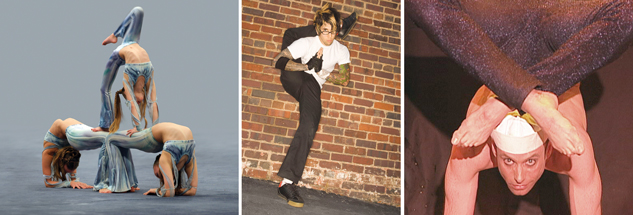
left: © Galina Barskaya/shutterstock
centre: © 2008 Jupiterimages Corporation
right: © Photo courtesy Mark Cyr
The 1996 Alberta Sport and Recreation Injury Survey is a retrospective study describing the annual incidence of injuries in the province of Alberta resulting from sport and recreational involvement. Data was collected by means of a telephone survey using random digit dialing techniques to obtain a representative sample of Albertans in the winter of 1995-96. The sample produced a total of 3790 respondents from 1478 households evenly split between genders, with an age range of 6 to 93 years.
The survey asked information regarding medically attended, non-fatal injuries resulting from sport and recreational activities. Results show that 83% of Albertans participated in at least one sport or recreational activity in the 12-month period prior to the survey. Males (84.4%) reported higher participation rates than females (81.8%). Findings reveal an annual incidence of sport or recreational injuries of 10.8%.
Based upon this rate, it is estimated that 246,888 sport or recreational injuries were experienced in 12 months prior to the study (95% Confidence Intervals 224,028 - 269,748). Among those reporting a sport or recreational injury, the most common types of injuries were a sprained/torn ligament (31.2%), strained/pulled muscle (18.8%), and fracture (13.4%). The most common bodily locations of injuries were the knees (20.9%) and the ankles (14.4%).
Mummery, W. K., Spence, J. C., Voaklander, D., & Vincenten, J. (1998). A descriptive epidemiology of sport and recreation injuries in a population-based sample: results from the Alberta Sport and Recreation InjurySurvey (ASRIS). Canadian Journal of Public Health, 89, 53-56.
Clearly, athletic injuries are a part of the reality of exercise and activity, whether of a moderate or extreme nature. In this next activity you will choose an athletic-related injury. This may be an injury you have experienced. You will research the injury, injury prevention, and treatment. You will present your research in a suitable format. You can find further instructions for this activity in your Module 6: Lesson 2 Assignment.
1.12. Page 3
Module 6—The Motor System and Homeostasis
 Read
Read
It is important to note that injuries related to athletics are not the only potential problems for the muscular system. A number of muscle disorders, also known as myopathies, may occur that are unrelated to athletics. A summary of a number of common disorders and ailments is found on page 345 of the textbook. In addition, you can read or follow the links below in order to learn more about these and other common disorders.
Because “different types of muscles have different jobs,” many problems can affect muscles. Muscle disorders can cause weakness, pain, or even paralysis. There may be no known cause for a muscle disorder.
Some known causes include
- injury or overuse, such as sprains, strains or cramps, or tendonitis (A muscle strain is the stretching or tearing of muscle fibres. A muscle strain can be caused by sports, exercise, a sudden movement, or trying to lift something that is too heavy. Symptoms of a muscle strain include pain, tightness, swelling, tenderness, and an inability to move the muscle very well.)
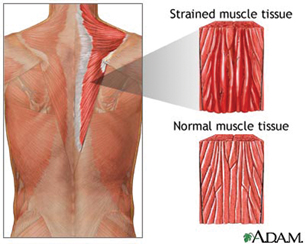
Courtesy National Institutes of Health
- genetics, such as muscular dystrophy (You can find more information on the Muscular Dystrophy Canada website.)
- some cancers (One source of more information is this article from the Mayo Clinic.)
- inflammation, such as myositis (The Myositis Association website will give you more information about myositis.)
- diseases of nerves that affect muscles
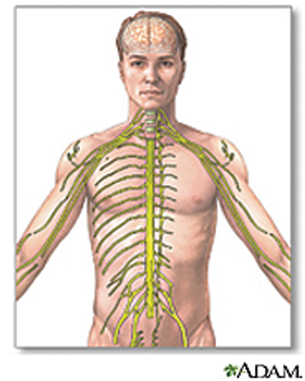
Courtesy National Library of Medicine
Neuromuscular Disorders
Neuromuscular disorders affect the nerves that control your voluntary muscles. Voluntary muscles are the ones you can control, such as in your arms and legs. Your nerve cells, also called neurons, send the messages that control these muscles. When the neurons become unhealthy or die, communication between your nervous system and muscles breaks down. As a result, your muscles weaken and waste away.
The weakness can lead to twitching, cramps, aches and pains, and joint and movement problems. Sometimes it also affects heart function and your ability to breathe.
Examples of neuromuscular disorders include
- amyotrophic lateral sclerosis
- multiple sclerosis
- muscular dystrophy
- myasthenia gravis
- spinal muscular atrophy
Many neuromuscular diseases are genetic, which means they run in families or there is a mutation in a person’s genes. Sometimes, an immune system disorder can cause them. Most of these disorders have no cure. The goal of treatment is to improve symptoms, increase mobility, and lengthen life.
- infections
- certain medicines
 Try This
Try This
TR 2. Muscle Disorders
Research multiple sclerosis. Go to Lesson 2 Assignment to complete this activity.
1.13. Page 4
Module 6—The Motor System and Homeostasis
 Read
Read
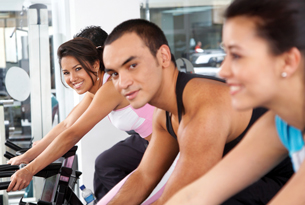
© Andresr/shutterstock
The Value of Exercise
Read the following article from Health Canada. It accompanies “The Value of Exercise” on pages 347 to 348 in the textbook.
The Benefits of Physical Activity
Physical activity offers a range of benefits for all ages and abilities. The number links refer to a bibliography.
For children/youth
Physical activity is essential for healthy growth and development. Regular physical activity in childhood develops cardiovascular fitness, strength, flexibility and bone density 1. For example 35-40% of a person's total bone mass is laid down in four years of adolescence 2.
Physical activity helps maintain a healthy body weight, and is associated with positive self-esteem, greater self-efficacy, improved academic and cognitive performance, and greater perceived well-being. Physical activity helps reduce a number of risk factors for diseases such as coronary heart disease by setting positive habits early on in childhood and adolescence. Young people who are physically active are less likely to use tobacco, alcohol, or other drugs 3.
For adults
Regular physical activity and higher levels of fitness allow daily tasks to be accomplished with greater ease and comfort and with less fatigue. Functional decline with advancing age is no longer accepted so lightly as research shows that as much as one half of the decline between the ages of 30 and 70 is due not to aging itself but to an inactive way of life 5.
There is a positive relationship between workplace physical activity programs and job satisfaction. Higher job satisfaction, in turn, can lead to better employee morale, increased productivity, and reduced absenteeism 6.
Leisure-time physical activity provides a balance to the demands of family and work . . . 4 |
Active individuals typically report improvement in energy levels, job attitude, and overall morale 7.
The Canada Life Assurance Company study noted an increase in productivity in fitness program participants compared to their inactive colleagues. Workplace physical activity programs reduce absenteeism due to illness, injury, and stress 8.
Workplace physical activity policies and programs can improve:
-
Coping abilities for stress
-
Fitness & health
-
Morale
-
General work performance
-
Job satisfaction
-
Organizational effectiveness
-
Productivity
Programs can also reduce:
-
Absenteeism
-
Injuries & accidents
-
Turnover
-
Disability/compensation costs
-
Health care costs
-
Life insurance costs
For seniors
Weight-bearing physical activity reduces the rate of bone loss associated with osteoporosis. Regular physical activity maintains strength and flexibility, and balance and coordination, and can help reduce the risk of falls—a real worry for the elderly 9.
Increasing age is associated with increased limitation in the ability to carry out basic activities of daily living. A significant portion of the decline in functional capacity associated with aging is due to physical inactivity 10.
In short, physical activity helps prolong good health and independence. |
For individuals with a disability
The active living movement removes the yardstick in comparing one person to another. It lets people set their own standards, and reap the social, emotional, spiritual and physical benefits of choosing their own activities. Active living helps make coping with the everyday challenges of life easier, and can even prevent relapses of certain disabilities. It can also increase the energy a person has to deal with the physical and mental stresses of a disability.
From a health perspective, active living increases mobility, improves posture, and reduces aches and pains that can accompany long periods of sitting. Better circulation reduces the possibility of blood-pooling and swelling in the legs. And maintenance of a healthy weight helps those who use aids to get around more easily.
For the environment
Active living protects and promotes a healthy environment by encouraging Canadians to participate in outdoor activities like walking, cycling and gardening. Environmental benefits are achieved when Canadians choose active modes of transportation such as walking, cycling or in-line skating rather than using their cars for a few more trips per week. Therefore, active living can contribute to decreasing air pollution.
Through active outdoor physical activities (walking, gardening and cycling), Canadians not only improve their health but also help the environment 11. |
As you have read, there are many benefits to physical activity and exercise. Exercise programs are valuable throughout life, no matter what your age or ability. Exercise can also take many forms—it need not only be traditional activities such as running, aerobics, or lifting weights. Beneficial physical activity can include everything from yoga, tai chi, cycling, swimming, or even walking to the nearby store to get that carton of milk instead of taking the car.
 Try This
Try This
TR 3. Designing an Exercise Plan
It is now your task to put together a daily week-long, 30-minute exercise plan that you could perform and that would appeal to a student in high school. Include a variety of activities in your plan, and indicate the time allotted for each activity. For each activity, be specific as to what the activity involves and outline its physiological benefits.
Once you have developed your routine, suggest why you think your program might lure a teenager off the couch and into a healthier lifestyle. Before you begin deciding on your exercise plan, research the requirements of a good physical activity routine. You may want to read “Canada’s Physical Activity Guide to Healthy Active Living” before you begin. You can find this guide in a web search.
1.14. Page 5
Module 6—The Motor System and Homeostasis
 Reflect and Connect
Reflect and Connect
Basketball player Steve Nash and golfer Mike Weir are only two of many prominent Canadians who have excelled in their chosen field of athletics. Through a careful monitoring of diet and exercise, their motor systems have reached a state of near perfect homeostasis that has allowed them to reach the top of their chosen sports.
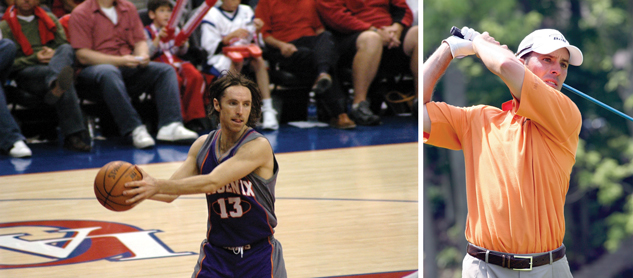
Left: Photo courtesy Justin McAllister (Steve Nash/basketball)
Right: © Barry Salmons/shutterstock (Mike Weir/golfer)
A superior motor system is just one aspect of their success. In addition to physiological balance, Weir and Nash have also achieved mental focus and an incredible competitive desire.
 Going Beyond
Going Beyond
Virtual Lab on Muscle Stimulation
Skeletal muscle fibres may be divided into two general categories—slow-twitch or Type I fibres, and fast-twitch or Type II fibres. The fast-twitch fibres can be further subdivided into Type IIa, or intermediate fast-twitch fibres, and Type IIb fast-twitch fibres. The characteristics of these various fibres play a major role in their function in the different physical activities that people undertake every day. These muscle types are explained on pages 346 and 347 of the textbook.
Now put your understanding of muscle contraction and muscle twitch into a laboratory context by performing the Virtual Lab on Muscle Stimulation. Investigate the experimental problem, “How does increased workload affect a skeletal muscle’s threshold of stimulation?”
Open the lab, and read the Purpose, Objectives, and Procedure for the experiment. Follow all instructions including recording your data in the Table and answering the Analysis questions in the Journal.
 Module 6: Lesson 2 Assignment
Module 6: Lesson 2 Assignment
Remember to submit the Assignment answers to your teacher as part of your Module 6: Lesson 2 Assignment.
1.15. Page 6
Module 6—The Motor System and Homeostasis
 Lesson Summary
Lesson Summary
In this lesson you explored the following essential questions:
-
What are the main complications of the muscular system, and what technologies can be used to treat these conditions?
-
How does the motor system support and interact with other body functions, including digestive, circulatory, respiratory, and excretory systems?
You learned about the importance of your muscular system in maintaining your health, particularly when you are involved in physical activity and exercise. The consequences of a failed or faulty muscular system, as reviewed in the discussion of athletic injuries and myopathies, only reinforce the significance of this body system.
Common muscle complications are muscle strain and muscular dystrophy. Muscle strain can be avoided through proper preparation for physical activity, while muscular dystrophy is a genetic condition that cannot be prevented, but it can be treated to a certain extent.
The importance of the muscular system in the function of almost every other body system is apparent. As you move through the remaining modules of Unit D, you will see how muscles involved in the peristalsis of food through the digestive tract play a role in all aspects of life-giving homeostasis. The expansion of the pleural cavity of the respiratory system, the pumping of the heart of the circulatory system, and the elimination of urine from the urinary system’s bladder also play an important role.
Lesson Glossary
atrophy: a reduction in size, tone, and power of a muscle
hypertrophy: an exercised induced increase in muscle mass
1.16. Module Summary/Assessment
Module 6—The Motor System and Homeostasis
 Module Summary
Module Summary
In this module you have studied the muscular system. This system acts as a supporting scaffold within your body. This allows you to carry out a variety of coordinated tasks affecting circulation, digestion, respiration, and excretion.

You saw that despite the physiological diversity of muscle cells, including skeletal, smooth, and cardiac cells, there is a unifying ability to contract. This inherent shortening, by way of sliding actin and myosin myofilaments, facilitates all human movements.
The value of exercise in maintaining healthy muscles and improving physical fitness, even into old age, is related to how efficiently your muscles use their fuel. The sources of ATP, creatine phosphate, fermentation, and aerobic respiration, are utilized at different points in an exercise regime. A by-product of muscle metabolism and movement is heat, which is dissipated when generated in excess amounts but also retained when faced with a cooler environment. An equilibrium maintains optimal body temperature by negative feedback systems.
Lastly, in this module you discovered the problems that occur when your muscles “break down” due to injury, illness, or disease. These complications of the muscular system may result in a variety of debilitations of short or long durations.
 Module Assessment
Module Assessment
In your module project you will be asked to do research on mitochondrial myopathy. You will explain how aerobic respiration and muscle contractions are affected by this disorder and predict the impact the disease would have on daily life. You will identify assistive technologies. Your unified response will be marked using the following rubric.
Module Project (15 marks)
Research mitochondrial myopathy using the Internet. There are several health-related websites that provide information. Then answer the following questions.
- Write a unified response addressing the following aspects of mitochondrial myopathy.
- Most aerobic cellular respiration takes place in the mitochondria of the muscle. Explain, in general terms, aerobic cellular respiration as it takes place in a skeletal muscle, and describe the role myoglobin plays in this reaction. (Note: You do not have to provide the biochemical pathways involved in your answer.) (5 marks)
- Explain, using a diagram, the sliding filament model of a muscle contraction, and describe how mitochondrial myopathy would disrupt the contraction of a skeletal muscle. (5 marks)
- Predict the impact on the daily life of a person who has mitochondrial myopathy, and identify two technologies that could be used to assist people with this condition. (5 marks)
- Most aerobic cellular respiration takes place in the mitochondria of the muscle. Explain, in general terms, aerobic cellular respiration as it takes place in a skeletal muscle, and describe the role myoglobin plays in this reaction. (Note: You do not have to provide the biochemical pathways involved in your answer.) (5 marks)
Marking Guide
Score |
Student Assessment Guidelines |
5 |
|
4 |
|
3 |
|
2 |
|
1 |
|
Technology and Society
Score |
Student Assessment Guidelines |
5 |
|
4 |
|
3 |
|
2 |
|
1 Poor |
|
0 |
|
NR |
|
1.17. Module Glossary
Module 6—The Motor System and Homeostasis
Module Glossary
actin: a thin myofilament consisting of two strands of actin protein molecules wrapped around each other
Actin works with myosin to produce muscle contractions.
atrophy: a reduction in size, tone, and power of a muscle
constrict: to make smaller or narrower, especially at one place, by squeezing
Blood vessels will constrict to reduce blood flow.
dilate: to make wider or larger; cause to expand or swell; stretch
Blood vessels will dilate to increase blood flow.
hypertrophy: an exercised induced increase in muscle mass
muscle fibre: a single muscle cell
myosin: a thick myofilament consisting of two strands of mysosin molecules wound around each other
One end consists of a long rod, while the other end consists of a double-headed globular region. Myosin works with actin to produce muscle contractions.
non-striated muscle: contains contractile proteins arranged randomly and do not create bands or stripes; called smooth muscle
striated muscle: marked with stripes or bands which are the result of highly organized arrangements of contractile proteins within muscles